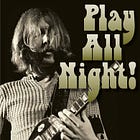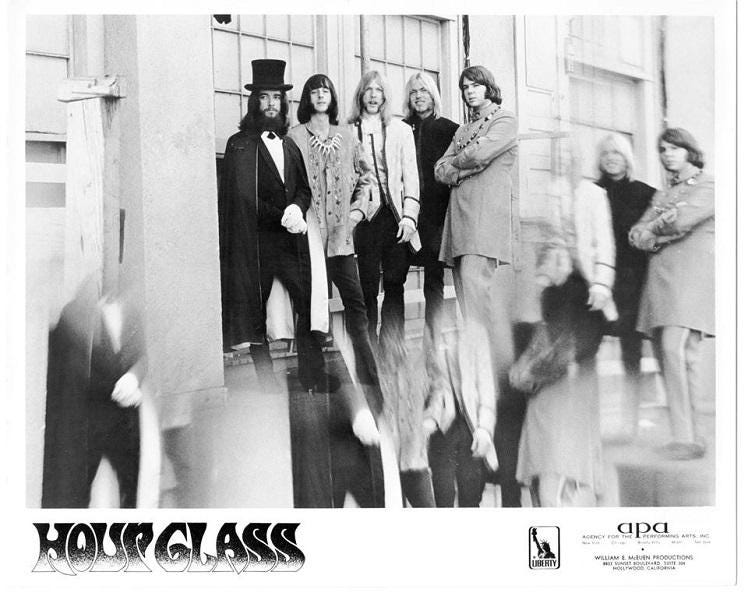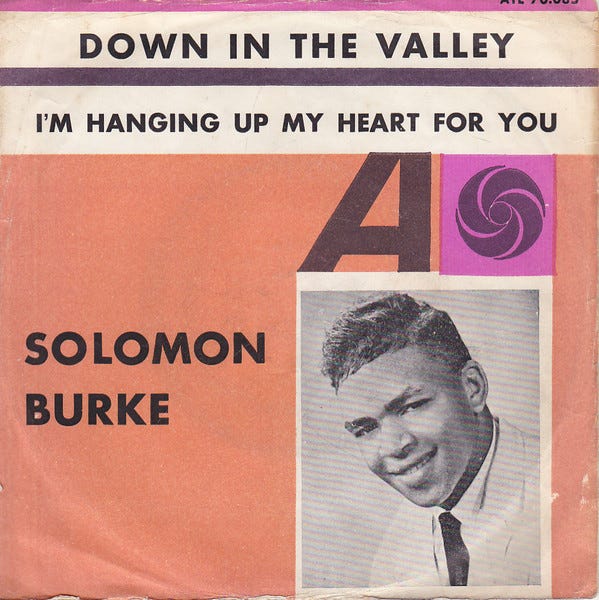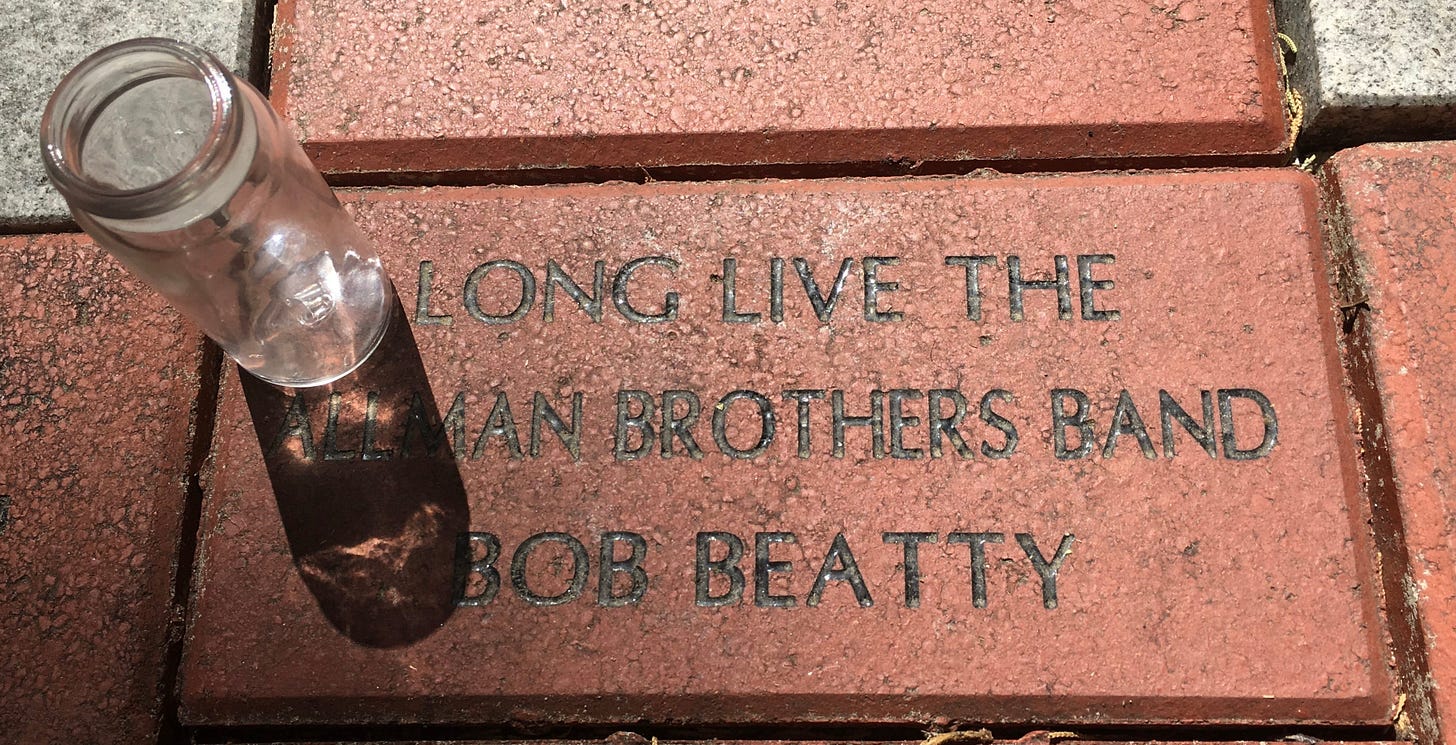Hour Glass Repertoire
The Play All Night Playlist Project
[NB: Previously paywalled, post now available to all Long Live the ABB readers thanks to the generosity of paid subscribers.1]
Welcome back to Long Live the ABB: Conversation from the Crossroads of Southern Music, History, and Culture:
Odds & Sods
Some notes from the engine room:
🍑Steeln’ Peaches Bandiversary I’ll be the evening’s Psychedelic Sherpa through the group’s Eat a Peach set. LIVESTREAM HERE2 or catch it LIVE AT TUFFY’S3 in Sanford.
🍄Gregg with Jaimoe, Chuck, Lamar This one just emerged, Gregg solo with what became Sea Level as his backing band: “Nevertheless” and “One More Try” from 1975.4
🎶Eat a Peach video essay I tried something new and put together a video essay on the album that was ultimately Duane’s swan song. Dig it:
Hour Glass Live Repertoire
This is the third playlist that accompanies Chapter 45 and the eighth installment of the Play All Night Playlist Project.
The other seven are here:
One thing that became VERY apparent as I researched this time in Duane’s life, was a huge dichotomy between Hour Glass as a live band and how Dallas Smith of Liberty Records produced them in the studio.
The band simply refused to play the songs on their studio albums, preferring a repertoire of blues and rhythm & blues covers.
I’ve pulled together the various tracks folks mentioned as part of Hour Glass’s repertoire that I included in Chapter 4.
This is not a comprehensive list nor am I 100% certain these are the arrangements Hour Glass used, but it’s close enough to give you an idea of how wildly different the band was live versus how Liberty Records wanted them to sound.
🎶Spotify playlist
🎶Youtube playlist
Liner Notes
Rather than songs from their albums, Hour Glass played the music they knew best: southern blues and R&B.
The repertoire remained mostly covers, including “Leaving Trunk” (Sleepy John Estes by way of Taj Mahal), “I’m Hanging Up My Heart For You” (Solomon Burke), Little Milton’s “Feel So Bad,” and Bobby Blue Bland’s “Stormy Monday” and “Turn on Your Love Light.”
They opened shows with an instrumental take on “Norwegian Wood” and closed with a current hit by country star Buck Owens.
John McEuen (Nitty Gritty Dirt Band)
“They knew they were good. Anyone who heard them understood how good they were. Duane had total command and authority of the guitar and Gregg was just a great singer who could make anything his own.”
The Yardbirds “Over Under Sideways Down” Duane’s bands were always lauded for their ability with the Yardbirds’ catalog. This features Jeff Beck in all his early guitar wizard glory.
Johnny Jenkins “Dimples”
Duane isn’t on this track (that I know of) but it’s the same Eddie Hinton arrangement as the Allman Brothers Band,6 which Paul Hornsby taught Duane.7
He is, however, on this track.
Yes, this is from Duane SOLO sessions on “Dimples” from Muscle Shoals in January/February 1969
The Nashville Teens “Tobacco Road”
Written by Duane and Gregg’s songwriting mentor J.D. Loudermilk, the Hour Glass take on it was apparently pretty psychedelic and Duane’s feedback-heavy attack on the song ticked off more than a few club owners.
Taj Mahal “Statesboro Blues” and “Leaving Trunk”
Taj Mahal’s arrangement of Blind Willie McTell’s acoustic “Statesboro Blues” featuring Jesse Ed Davis’s slide guitar is what inspired Duane to pick up the technique. It permanently entered Duane’s repertoire in this era and became the first track on At Fillmore East. Sleepy John Estes’s “Leaving Trunk” is another acoustic blues Mahal adapted for his first album.8
Bobby “Blue” Bland “Stormy Monday” and “Turn on Your Lovelight”
The Allman Brothers Band included a brilliant take on T-Bone Walker’s “Stormy Monday” on At Fillmore East. Gregg’s 1974 The Gregg Allman Tour album included a rollicking take on “Lovelight,” a song that’s been in the jamband canon for years. It was one of Grateful Dead founder Pigpen’s signature tunes, and a particular favorite of Col. Bruce Hampton’s.
“I’m Hanging Up My Heart for You”
Here’s Solomon Burke’s original and a cover by Percy Sledge, whose “When a Man Loves a Woman” put Muscle Shoals on the map. Drummer Jaimoe backed Sledge around the same time Duane and Gregg were in L.A. though I don’t believe he ever recorded with him.
Little Milton “I Feel So Bad”
Little Milton was Gregg’s favorite singer and he covered this song throughout his career. A live version appeared on The Gregg Allman Tour. The Derek Trucks Band covered it regularly and released it on 2004’s Live at the Georgia Theatre.
Hour Glass “Norwegian Wood”
A psychedelic arrangement from their second album. I can only imagine how killer it would’ve been live. This is an example of an original arrangement for Duane, something completely different from the track they were covering.
Buck Owens “Act Naturally”
Buck Owens was one of the biggest country stars on the planet at this time. Hour Glass regularly covered whichever Owens song was on the charts at the time. Since I found no reference to any particular song, I chose this as it’s one the Beatles covered, with Ringo Starr on vocals.
Lefty Frizell “Long Black Veil”
Beyond their frustration with their career, Duane and his Hour Glass bandmates found Los Angeles an alien environment. The music of home comforted them.
As Pete Carr noted
“Duane and I shared an apartment and we would play guitars together a lot. I remember Gregg, Duane, and I playing and singing ‘Long Black Veil.’
I remember us harmonizing on it and it really was a moment separated from everything else we were doing.
It was like a close family thing.”
Let’s look at that quote a bit more…
Carr’s expressing one of the biggest frustrations Duane and company had in California: it was just too unlike home, the South.
I’m struck how immediately he got to work upon returning South in August/September 1968.
In September 1968 alone, Duane
joined, recorded, and performed live with Butch Trucks and 31st of February
linked up with Berry Oakley about their plans to form a band
played ended up a Clarence Carter session in Muscle Shoals
Two months later, in November, he returned to the Shoals to play on a Wilson Pickett session. He suggests Picket cover “Hey Jude,” the song becomes a massive hit, and Duane becomes a star to such a degree that he gets to hand pick his next musical project.
Upgrade your subscription
Here’s that LIVESTREAM again:
Shout-out Art Dobie, my old pal from the ABB listserv (RIP), for finding this gem.
Here are the other 2 for this chapter: California Rock (Chapter 4.1) Hour Glass studio albums (Chapter 4.2)
“Dimples” from Ludlow Garage April 1970 first appeared on Duane Allman: An Anthology II, produced by subscriber and friend Anthony Yoken, whom I interviewed awhile back
Phil Walden used some of Duane’s solo session material for Jenkins’s record, most notably “Down Along the Cove.”
The Tedeschi Trucks Band plays it regularly to this day, as did the Derek Trucks Band before them. Here’s a wonderful rehearsal clip of Taj Mahal, TTB, and dobro master Jerry Douglas on “Leaving Trunk.”








Thanks, Bob, for this list of Hourglass material.